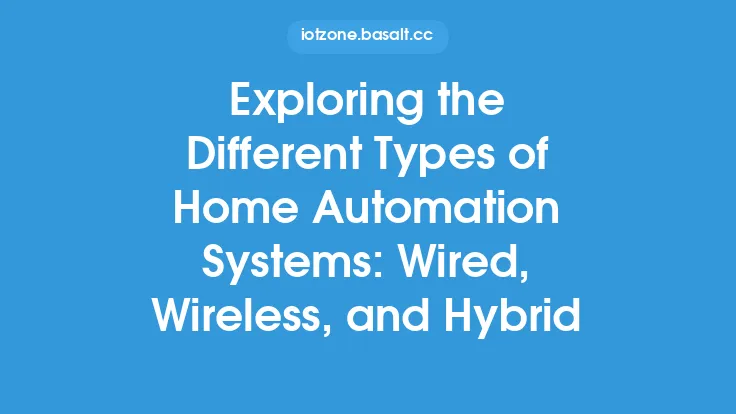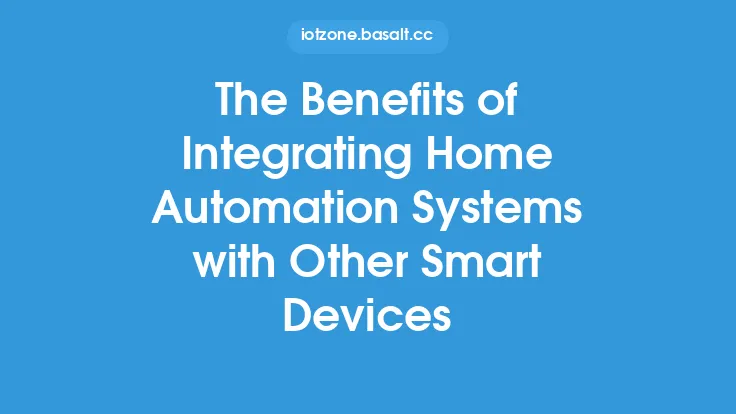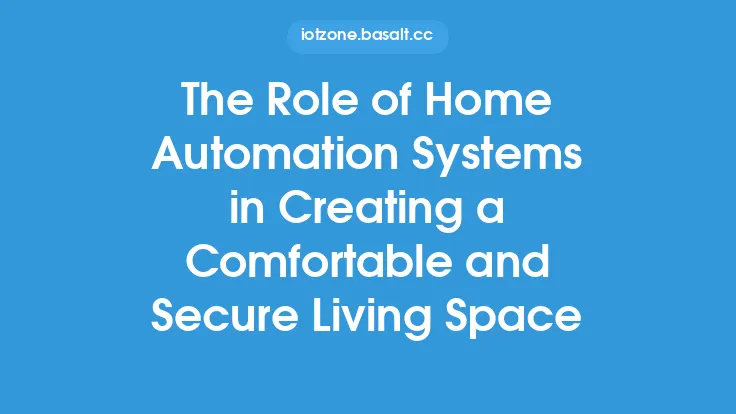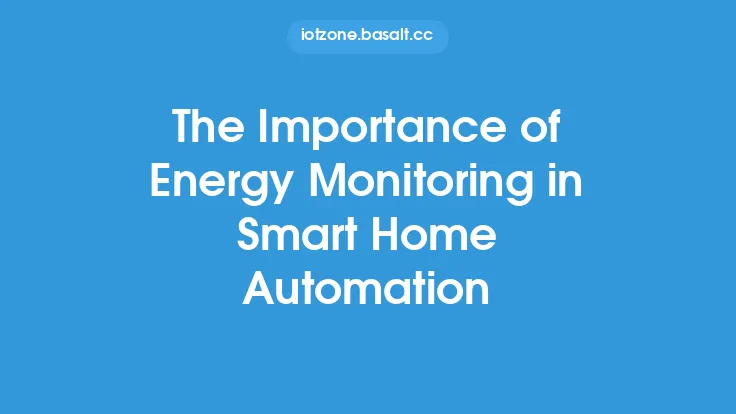The concept of home automation has been around for several decades, but it's only in recent years that it has gained significant traction and become a mainstream phenomenon. At the heart of any home automation system is a complex architecture that enables seamless communication and control between various devices and sensors. Understanding this architecture is crucial for designing, implementing, and maintaining a robust and efficient home automation system.
Introduction to Home Automation Architecture
Home automation architecture refers to the overall design and structure of a home automation system, including the various components, protocols, and technologies used to integrate and control different devices and systems. A typical home automation system consists of several layers, including the device layer, the network layer, the control layer, and the user interface layer. Each layer plays a critical role in the overall functioning of the system, and understanding how they interact with each other is essential for designing and implementing a home automation system.
Device Layer
The device layer is the lowest level of the home automation architecture and consists of the various devices and sensors that are connected to the system. These devices can include lighting systems, thermostats, security cameras, door locks, and other appliances that can be controlled and monitored remotely. Each device typically has its own unique identifier and communication protocol, which allows it to interact with the rest of the system. The device layer is responsible for collecting data from the environment and sending it to the control layer for processing and analysis.
Network Layer
The network layer is responsible for enabling communication between the various devices and the control layer. This layer consists of the physical and logical networks that connect the devices, including wired and wireless networks such as Ethernet, Wi-Fi, and Zigbee. The network layer provides the infrastructure for data transmission and reception, allowing devices to send and receive commands and data. The choice of network protocol depends on the specific requirements of the system, including the type of devices being used, the distance between devices, and the level of security required.
Control Layer
The control layer is the brain of the home automation system, responsible for processing and analyzing data from the device layer and sending commands to the devices to perform specific actions. This layer typically consists of a central controller or hub that runs software and firmware to manage the system. The control layer receives data from the device layer, processes it, and sends commands to the devices to perform specific actions, such as turning on lights or adjusting the thermostat. The control layer can also interact with external systems, such as weather services or energy management systems, to provide additional functionality and features.
User Interface Layer
The user interface layer is the highest level of the home automation architecture and provides a user-friendly interface for interacting with the system. This layer can include mobile apps, web interfaces, voice assistants, and other interfaces that allow users to monitor and control the system remotely. The user interface layer provides a simple and intuitive way for users to interact with the system, allowing them to view real-time data, receive notifications, and send commands to the devices. The user interface layer can also provide additional features, such as scheduling, scene control, and energy monitoring, to enhance the overall user experience.
Communication Protocols
Communication protocols play a critical role in home automation systems, enabling devices to communicate with each other and with the control layer. There are several communication protocols used in home automation, including Zigbee, Z-Wave, Bluetooth, and Wi-Fi. Each protocol has its own strengths and weaknesses, and the choice of protocol depends on the specific requirements of the system. Zigbee and Z-Wave are popular protocols for home automation, offering low power consumption, low cost, and high reliability. Bluetooth and Wi-Fi are also widely used, offering higher data rates and longer range, but requiring more power and infrastructure.
Security Considerations
Security is a critical aspect of home automation systems, as they often involve sensitive data and remote access to devices. Home automation systems must be designed with security in mind, using protocols and technologies that provide authentication, authorization, and encryption. Devices and systems must be designed to prevent unauthorized access, and data must be encrypted to prevent eavesdropping and tampering. Additionally, home automation systems must be designed to detect and respond to security threats, such as hacking and malware attacks.
Scalability and Flexibility
Home automation systems must be designed to be scalable and flexible, allowing for easy addition of new devices and systems. This requires a modular architecture that allows devices to be added or removed as needed, without disrupting the overall system. Scalability and flexibility also require the use of open standards and protocols, allowing devices from different manufacturers to interoperate seamlessly. Additionally, home automation systems must be designed to adapt to changing user needs and preferences, providing a high degree of customization and personalization.
Conclusion
In conclusion, the architecture of home automation systems is complex and multifaceted, involving several layers, protocols, and technologies. Understanding this architecture is crucial for designing, implementing, and maintaining a robust and efficient home automation system. By considering the device layer, network layer, control layer, and user interface layer, as well as communication protocols, security considerations, and scalability and flexibility, developers and users can create home automation systems that are powerful, flexible, and secure. As home automation continues to evolve and become more widespread, understanding the underlying architecture will become increasingly important for creating systems that meet the needs of users and provide a high degree of convenience, comfort, and security.





